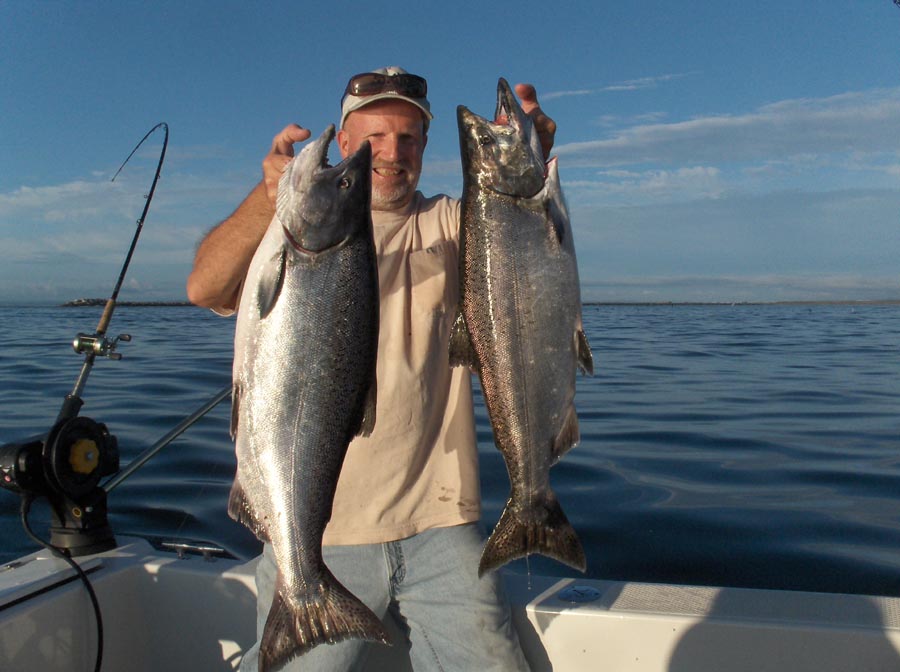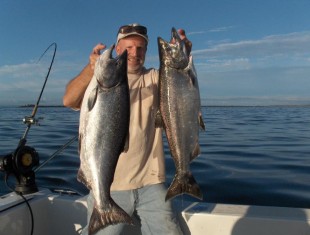
Editor’s note: This story was first published in 2010 in the Sports Paper and is being reprinted as a historical context in light of the wild fires consuming parts of eastern Washington.
By Earl Sande
n the early 1990s, myself, Mike McLean and Larry Foster decided to look for a new place to go elk hunting. After doing a little research and looking over some maps we picked a spot in northern Idaho at the end of the road along the St. Joe River.
We loaded up the travel trailer, along with the 4-wheel-drive Dodge and headed for our new hunting area sometime in October. We had a great time, got lots of serious exercise and harvested three nice elk.
I couldn’t help but notice everywhere I hiked in those rugged mountains I saw the remains of an old forest fire. I figured sometime in the last 100 years there must have been a monster of a fire. One day we drove some Forest Service roads for miles and miles and we could still see signs of that old fire.
Over the next few years I would occasionally wonder just how big that forest fire was and when did it happen? So I finally did some researching and discovered it was one of the largest forest fires in American history.
All this happened during the summer of 1910 in northern Idaho. The deadly fire consumed over three million acres of mostly old growth forest, including the largest stand of huge white pine trees that hadn’t been cut down yet in the United States.
Eighty-Seven people lost their lives and many small towns were burnt to the ground. Most of the charred remains belonged to the brave men fighting the fire. Some were 50 miles from the nearest road surrounded by fire and 80 MPH winds with nowhere to run.
America had already been through some large forest fires in the late 1800s. In half a dozen fires over 30 years Oregon lost millions of acres of old growth timber. The Bighorn Mountains in Wyoming were burnt sometime in the 1870s and in 1871 the infamous monster of a fire in Wisconsin charred 1.3 million acres and killed over 1, 000 people.
Summer came early to the Rocky Mountain West in 1910. The months of March and April were especially warm and dry in northern Idaho. The mountain snows were long gone and by May 1st the forests were dryer then a popcorn fart.
The first fire was reported the last few days of April and by July dry lightning storms were starting fires nearly every day. The newly formed U.S. Forest Service was in their first year of organizing a forest fire-fighting unit. It would soon be involved with the fire-fighting classroom from hell!
By the middle of August over 1, 500 small fires were burning in northern Idaho. Most of them seemed to be somewhat under control. By this time over 1, 400 men were employed fighting these fires in groups of 10 to 70, along with pack horses and supplies spread out over millions of acres of roadless mountains and forest.
For the rest of their lives everyone living in northern Idaho would remember exactly what they were doing on August 20th, 1910. A dry storm front started to blow out of the southwest at over 70 miles per hour. All those small fires soon merged into several huge fast moving fires, totally out of control!
By August 22nd it was all but over. But a lot had happened in those two days, probably enough to make an amazing movie. Three thousand square miles went up in smoke and there was unbelievable death and destruction. But there were certainly lots of heroes that saved many lives.
Forest Service ranger John Baird was in charge of 30 men when at 10 p.m. on the 20th while in their tents the dark sky lit up along with a defining noise off in the distance. A huge firestorm with flames hundreds of feet high was heading toward them at a frightening pace. With only minutes to spare he ordered his men to move the supplies to a sand bar in the middle of Moose Creek and to cover themselves with a wet blanket and lie facedown in the Creek.
The firestorm quickly blew over them continuing on through the mountains devouring everything in its path. All these men survived thanks to the quick-thinking forest service ranger.
Edward Pulaski was trying to get 40 of his men out of the burning mountains but they could not outrun the firestorm. He had prospected the area for 20 years and knew of an old mine close by. He ordered his men and two horses into the tunnel and told them to lie facedown.
As the fire roared by most of the oxygen was sucked out of the mine and the men passed out, but only five died.
There were many other stories of bravery and remarkable human endurance during those two days many years ago. It’s unlikely, however, that anyone is still alive to remember the big fire of 1910.

